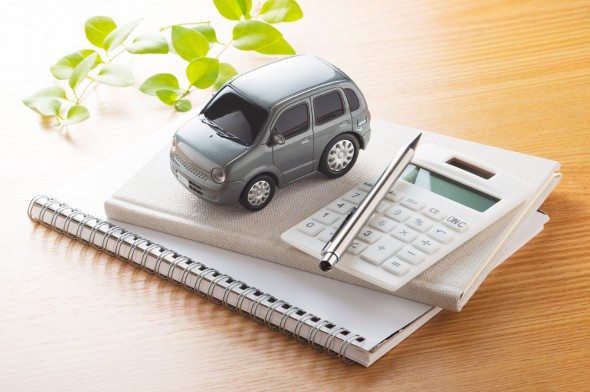
These days, it can take a long time to pay off a car loan. On average, loans for new and used vehicles come with terms lasting more than five years. Paying down a car loan isn’t that different from paying down a mortgage. In both cases, a large percentage of your initial payments go toward paying interest. If you are not familiar with why that is, we explain a concept called amortization.
Consider working with a financial advisor as you make decisions about taking out a loan and evaluating which loans should be paid down first.
Car Loan Amortization: The Basics
Amortization is the process of repaying a loan on a set schedule. In order to do that, you’re required to make a payment every month by a certain due date. With each payment, your money is split between paying off interest and paying off your principal balance (or the amount that your lender agreed to lend you).
What you’ll soon discover is that your car payments – at least in the beginning – cover quite a bit of interest. That’s how amortization works. Over time, your lender will use a greater share of your car payments to reduce your principal loan balance (and a smaller percentage to pay for interest) until you’ve completely paid off the vehicle you purchased.
Not all loans amortize. For example, applying for a credit card is akin to applying for a loan. While your credit card statement will include a minimum payment amount, there’s no date set in advance for when that credit card debt has to be paid off.
With amortizing loans – like car loans and home loans – you’re expected to make payments on a regular basis according to something called an amortization schedule. Your lender determines in advance when your loan must be paid off, whether that’s in five years or 30 years.
Find out now: How much house can I afford?
The Interest on Your Car Loan

Now let’s talk about interest. You’re not going to be able to borrow money to finance a car purchase without paying a fee (interest). But there’s a key difference between simple interest and compound interest. When it comes to taking out a loan, simple interest is the amount of money that’s charged on top of your principal. Compound interest, however, accounts for the fee that accrues on top of your principal balance and on any unpaid interest.
As of April 2016, 60-month new car loans have rates that are just above 3%, on average. Rates for used cars with 36-month terms are closer to 4%.
The majority of car loans have simple interest rates. As a borrower, that’s good news. If your interest doesn’t compound, you won’t have to turn as much money over to your lender. And the sooner you pay off your car loan, the less interest you’ll pay overall. You can also speed up the process of eliminating your debt by making extra car payments (if that’s affordable) and refinancing to a shorter loan term.
Car Loan Amortization Schedules
An amortization schedule is a table that specifies just how much of each loan payment will cover the interest owed and how much will cover the principal balance. If you agreed to pay back the money you borrowed to buy a car in five years, your auto loan amortization schedule will include all 60 payments that you’ll need to make. Beside each payment, you’ll likely see the total amount of paid interest and what’s left of your car loan’s principal balance.
While the ratio of what’s applied towards interest versus the principal will change as your final payment deadline draws nearer, your car payments will probably stay the same from month to month. To view your amortization schedule, you can use an online calculator that’ll do the math for you. But if you’re feeling ambitious, you can easily make an auto loan amortization schedule by creating an Excel spreadsheet.
To determine the percentage of your initial car payment that’ll pay for your interest, just multiply the principal balance by the periodic interest rate, which is your annual interest rate divided by 12). Then you’ll calculate what’s going toward the principal by subtracting the interest amount from the total payment amount.
For example, if you have a $25,000 five-year car loan with an annual interest rate of 3%, your first payment might be $449. Out of that payment, you’ll pay $62.50 in interest and reduce your principal balance by $386.50 ($449 – $62.50). Now you only have a remaining balance of $24,613.50 to pay off, and you can continue your calculations until you get to the point where you don’t owe your lender anything.
Related Article: The Best Cities for Electric Cars
Final Word

Auto loan amortization isn’t nearly as complicated as it might sound. It requires car owners to make regular payments until their loans are paid off. Since lenders aren’t required to hand out auto amortization schedules, it might be a good idea to ask for one or use a calculator before taking out a loan. That way, you’ll know how your lender will break down your payments.
Tips on Borrowing
- A financial advisor can provide you with valuable insight and guidance when it comes to making decisions about taking out a loan. If you don’t have a financial advisor yet, finding one doesn’t have to be hard. SmartAsset’s free tool matches you with up to three vetted financial advisors who serve your area, and you can interview your advisor matches at no cost to decide which one is right for you. If you’re ready to find an advisor who can help you achieve your financial goals, get started now.
- Check out our no-cost mortgage calculator to get a quick estimate of approximately how much house you may be able to afford.
Photo credit: ©iStock.com/OSORIOartist, ©iStock.com/studio-pure, ©iStock.com/Wavebreakmedia